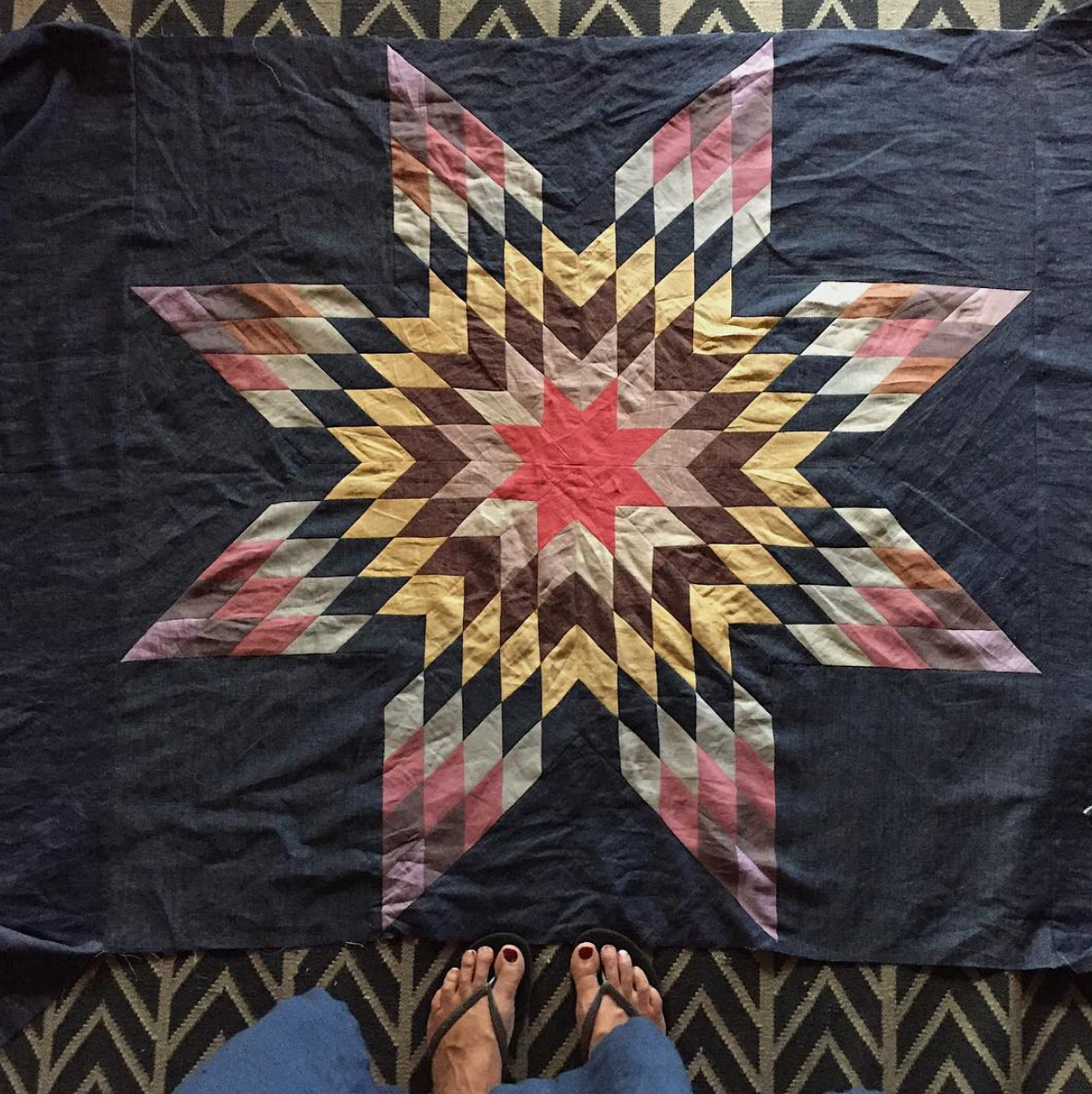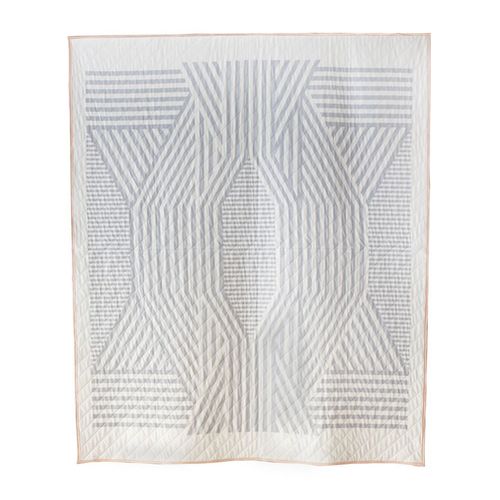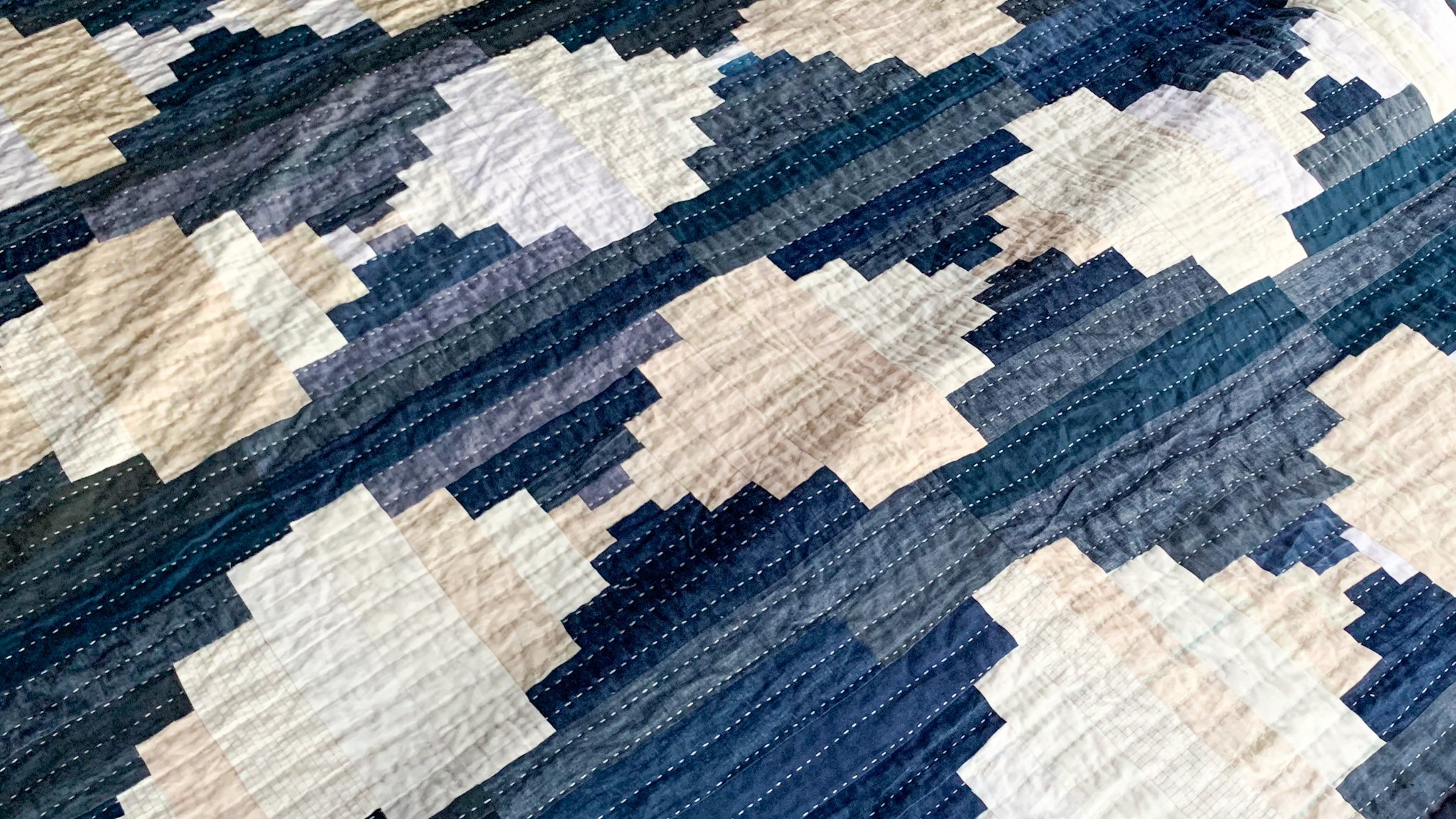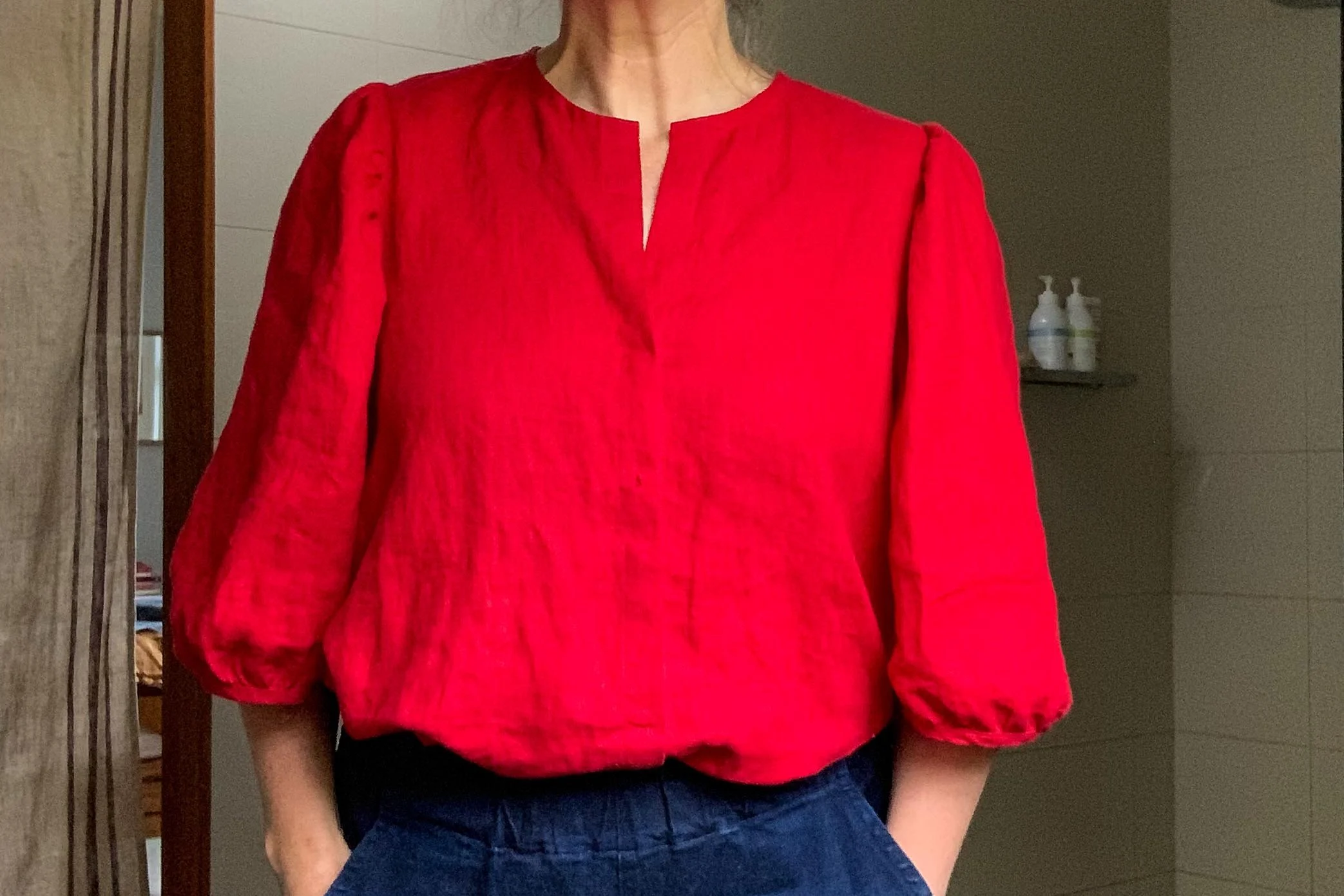Years ago I made a quilt that wasn’t quite right - and I think I’m about to make another. You see in craft there are many norms. We call these norms ‘rules’ and they are often based on tradition. We hear that the right way to do things is X and if we’ve done it kinda Y-like we may be “lucky” enough to be informed of the error of our ways. And sometimes that can be useful - maybe we didn’t know about X way of doing things. And maybe X would work better. But sometimes we get so caught up with X that we forget it’s even possible to think up Y. And Y could be just what we needed.
I’m right in the middle of doing my middle kids quilt and gee-willakers I’m loving it. It is a true joy project - the process is magically calming and exquisitely sensory. The hand-quilting part of making a quilt is a basically a menial task with all the non-thinking mindfullness that the menial entails. Plus I get to look at the pretty quilt while I’m doing it. And I think that the hand quilting I’ve chosen to do - which I was really uncertain about - is enhancing the look of the quilt delightfully.
To make the process even more joyful I’ve (rudely) taken over the whole of our dining table for the duration, and am making us eat dinner in our brekkie spot. Which means the quilt is always out and ready, so I can do a stitch or two here and there throughout the day. As projects go this one has been totally joy filled once I got over my stories and my fear. I really had to sit in the fear that it wouldn’t work in order to take a step forward.
I handquilted the star to make it the focus of the quilt. And as I’m just over half way through quilting the star, I’m naturally starting to think about how to quilt the rest of the quilt. Outside the star the rest of the quilt is a dark denim chambray, which I really want to keep as a background rather than bringing it into the design….which brings me to the subject of today’s post which is “Making shit up”.
Years ago when I made the spot quilt, I broke with quilting tradition - or at least how I was taught to make a quilt. You see I was trying to show different techniques of quilting for a workshop, so decided to put all the techniques together. I used hand quilting as a feature in the middle of the quilt, and then for the rest of the quilt I machine quilted it. To the best of my knowledge a half-hand-quilted/half-machine-quilted quilt really isn’t a thing. I don’t think there is a special category at the quilting show for this particular mishmash of techniques. To the best of my knowledge this breaks with tradition.*
But after living with the spot quilt for many years I really adore it this hand/machine combination. You see the middle part of the quilt is hand quilted which gives the quilt a tactility and a warmth that a fully machine quilted quilt often lacks (in my opinion!) AND the machine quilted part of the quilt has a certain fluidity that is lacking in the more densely hand quilted spot. This means a cosy quilt with the benefits of both sports - machine and hand.
While the lovely Mary Jane Mucklestone was in town I hosted a workshop with her in Sydney, and one of the things she talked about was the idea of tradition, and how it is not always as traditional as we might think. MJ is a wealth of knowledge and history of Fair Isle and Shetland knitting - she’s even written books about it! And so what she said surprised me - which was, that traditions are incredibly practical, that there are reasons why the crafters make the choices they do, but also that sometimes in some places, and some families, they do things differently based on their preference. For example some people sew their ends in, some weave in ends as they go, some tie knots and others (shock and horror) do nothing but leave their ends dangling. MJ spoke of how tradition isn’t set in stone, and that she is often surprised by the methodologies people use.
While traditions have much to teach us, we can sometimes stuck on the idea that they are the only ways of doing things and this is a problem. At workshops and festivals and craft fairs and shows, I’ve heard many a lovely human tell another lovely human, that they are doing it wrong. And maybe they are. Maybe in that case there is a better way of doing something, or a way more in line with tradition…. and yet I also want to put my hand up for the idea that we should engage with making shit up regularly. Making shit up to see if we can find a better way, a more practical way of doing something. Making shit up because tradition is not set in stone. Making shit up because traditions evolve. Making shit up because it’s fun and we like the result better.
Every technique was made up at sometime by someone. Whether it was made up yesterday by you, or 150 years ago by women on a far off isle, all options are equally valid. Neither option gets to exclusively own credibility - not the traditional method, nor the new and shiny idea.
Our craft is not a performance for others, but rather it is a lived experience. And as such, all that matters, is that you are pleased with the results you get from the method you have chosen.
I wrote a while back about Breaking the Rules in craft and how often the “rules” are dictated by the values or the circumstances of the people who made them up. For these quilts - I initially broke them to demonstrate techniques for a workshop but now after living with it, and loving it, I think it might be my thing. This beautiful star quilt is going to also be a mish-mash quilt. A hand quilted star with a machine quilted background - just the thing to top it off,don’t you think?
Do you enjoy making shit up? Or are you tradition all the way? Have you invented a technique like mish-mash quilting? If so I’d love to hear about it…..
Felicia x
*Maybe this is a thing in some part of the world I don’t know about? Or is part of some beautiful tradition that I have never seen? I really don’t know that much about the history of quilting. I’d love to hear if you know of a place that does this mish-mash.


























































